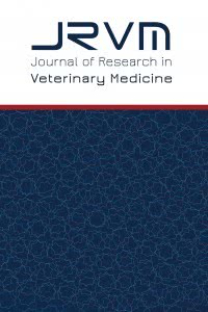BİNA DIŞ DUVARLARINDA YOĞUŞMA DİKKATE ALINARAK GEREKLİ YALITIM KALINLIĞININ BELİRLENMESİ: BİTLİS İLİ İÇİN ÖRNEK ÇALIŞMA
Yoğuşma, Yalıtım kalınlığı, Dıştan yalıtımlı duvar, Sıcaklık, Bağıl nem
Determination of Required Insulation Thickness by Considering Condensation in Outer Walls: A Case Study for Bitlis Province
Condensation, Insulation thickness, Externally insulated wall, Temperature, Relative humidity,
___
- Arslan, O. ve Köse, R. (2006) Thermoeconomic optimization of insulation thickness considering condensed vapor in buildings”, Energy and Buildings, 38(12), 1400-1408. doi: 10.1016/j.enbuild.2006.02.012
- Atmaca, Ş.U. ve Kargıcı, S. (2006) Konya’da kış aylarında yapı malzemelerinde oluşan buhar geçişinin örnekle incelenmesi, Mühendis ve Makine, 47, 55-62.
- Bolattürk, A. (2008) Optimum insulation thicknesses for building walls with respect to cooling and heating degree-hours in the warmest zone of Turkey, Building and Environment, 43(6), 1055-1064. doi: 10.1016/j.buildenv.2007.02.014
- Chang, S.J. ve Kim, S. (2015) Hygrothermal performance of exterior wall structures using a heat, air and moisture modeling, Energy Procedia, 78, 3434-3439. doi: 10.1016/j.egypro.2015.12.328
- Çengel, Y. ve Ghajar, A. (2010) Heat and Mass Transfer: Fundamentals and Applications, McGraw Hill Inc., New York.
- Dağsöz, A.K. (1995) Türkiye’de Derece-Gün Sayıları, Ulusal Enerji Tasarruf Politikası, Yapılarda Isı Yalıtımı, İzocam Yayınları, İstanbul.
- Gürel, A.E. ve Cingiz, Z. (2011) Economical analysis of determination thermal insulation thickness for different external walls, Sakarya University Journal of Science, 15(1), 75-81.
- Heperkan, A.H., Bircan, M.M. ve Sevindir, M.K. (2001) Yapı malzemelerinde buhar difüzyonu ve yoğuşma, V. Ulusal Tesisat Mühendisliği Kongresi ve Sergisi, İzmir, 461-470.
- Kaynaklı, Ö. (2008) A study on residential heating energy requirement and optimum insulation thickness, Renewable Energy, 33, 1164-1172. doi: 10.1016/j.renene.2007.07.001
- Kaynaklı, Ö., Canbolat, A.S. ve Bademlioğlu, A.H. (2017) A study on the parameters affecting insulation thickness on external wall of buildings, International Journal of Mechanical and Production Engineering, 5(7): 81-84.
- Kaynaklı, O., Bademlioğlu, A.H. ve Ufat, H.T. (2018) Determination of optimum insulation thickness for different insulation applications considering condensation, Tehnicki Vjesnik, 25(Supplement 1), 32-42. doi: 10.17559/TV-20160402130509
- Kürekçi, N.A. (2016) Determination of optimum insulation thickness for building walls by using heating and cooling degree-day values of all Turkey’s provincial centers, Energy and Buildings, 118, 197-213. doi: 10.1016/j.enbuild.2016.03.004
- Liu, X., Chen, Y., Ge, H., Fazio, P. ve Chen, G. (2015) Numerical investigation for thermal performance of exterior walls of residential buildings with moisture transfer in hot summer and cold winter zone of China, Energy and Buildings, 93, 259-268. doi: 10.1016/j.enbuild.2015.02.016
- Meteoroloji Genel Müdürlüğü, İllerimize Ait Genel İstatistik Verileri. Erişim Adresi: https://mgm.gov.tr/veridegerlendirme/il-ve-ilceler-istatistik.aspx?k=A&m=BITLIS (Erişim Tarihi:23.11.2018)
- Moon, H.J., Ryu, S.H. ve Kim, J.T. (2014) The effect of moisture transportation on energy efficiency and IAQ in residential buildings, Energy and Buildings, 75, 439-446. doi: 10.1016/j.enbuild.2014.02.039
- TUİK, Türkiye İstatistik Kurumu; 2018 (www.tuik.gov.tr)
- You, S., Li, W., Ye, T., Hu, F. ve Zheng, W. (2017) Study on moisture condensation on the interior surface of buildings in high humidity climate, Building and Environment, 125, 39-48. doi: 10.1016/j.buildenv.2017.08.041
- Zhu, P., Huckemann, V. ve Fisch, M.N. (2011) The optimum thickness and energy saving potential of external wall insulation in different climate zones of China, Procedia Engineering, 21, 608-616. doi: 10.1016/j.proeng.2011.11.2056
- ISSN: 2148-4147
- Yayın Aralığı: 3
- Başlangıç: 2002
- Yayıncı: BURSA ULUDAĞ ÜNİVERSİTESİ > MÜHENDİSLİK FAKÜLTESİ
BİR PAKET GIDA ÜRETİM İŞLETMESİNDE TAGUCHİ PARAMETRE TASARIMI İLE ÇOK YANITLI ENİYİLEME
Johan JASON, Marc WUILPART, Kıvılcım YÜKSEL
FATİH ÇAVDUR, Elif KAYMAZ, Aslı SEBATLI
Esin BOZKURT KOPUZ, Aycan ERİM, Saffet ALTINDAĞ ALTINDAĞ
ANALYSIS OF SURFACE PLASMON RESONANCE SENSING BASED ON PHASE-DETECTION IN THE INFRARED RANGE
Gizem KARAKAN GÜNAYDIN, Erhan Kenan ÇEVEN
YÜKSEK KROMLU BEYAZ DÖKME DEMİRLERDE FAZ DENGESİNİN BENZETİMİ
